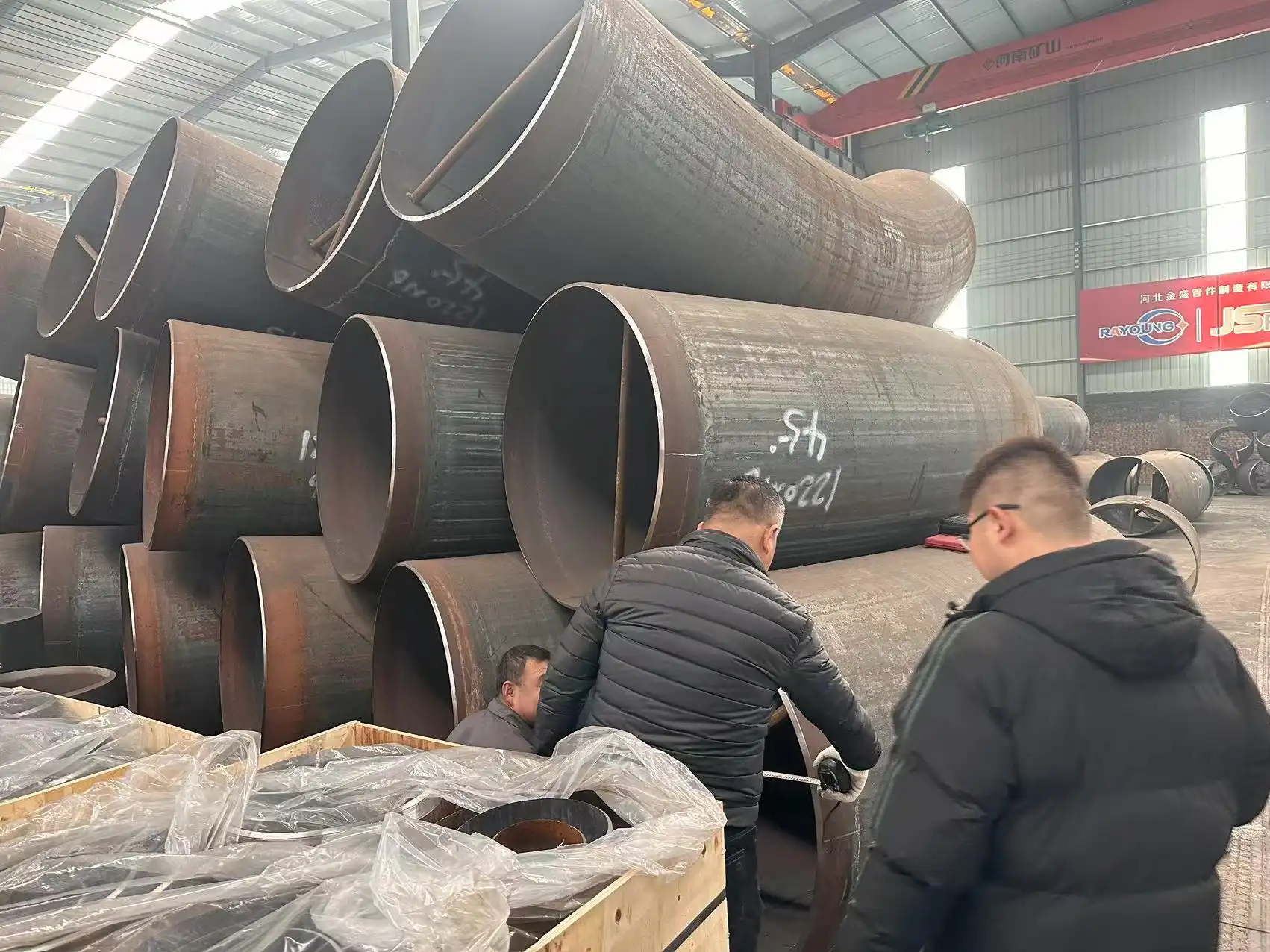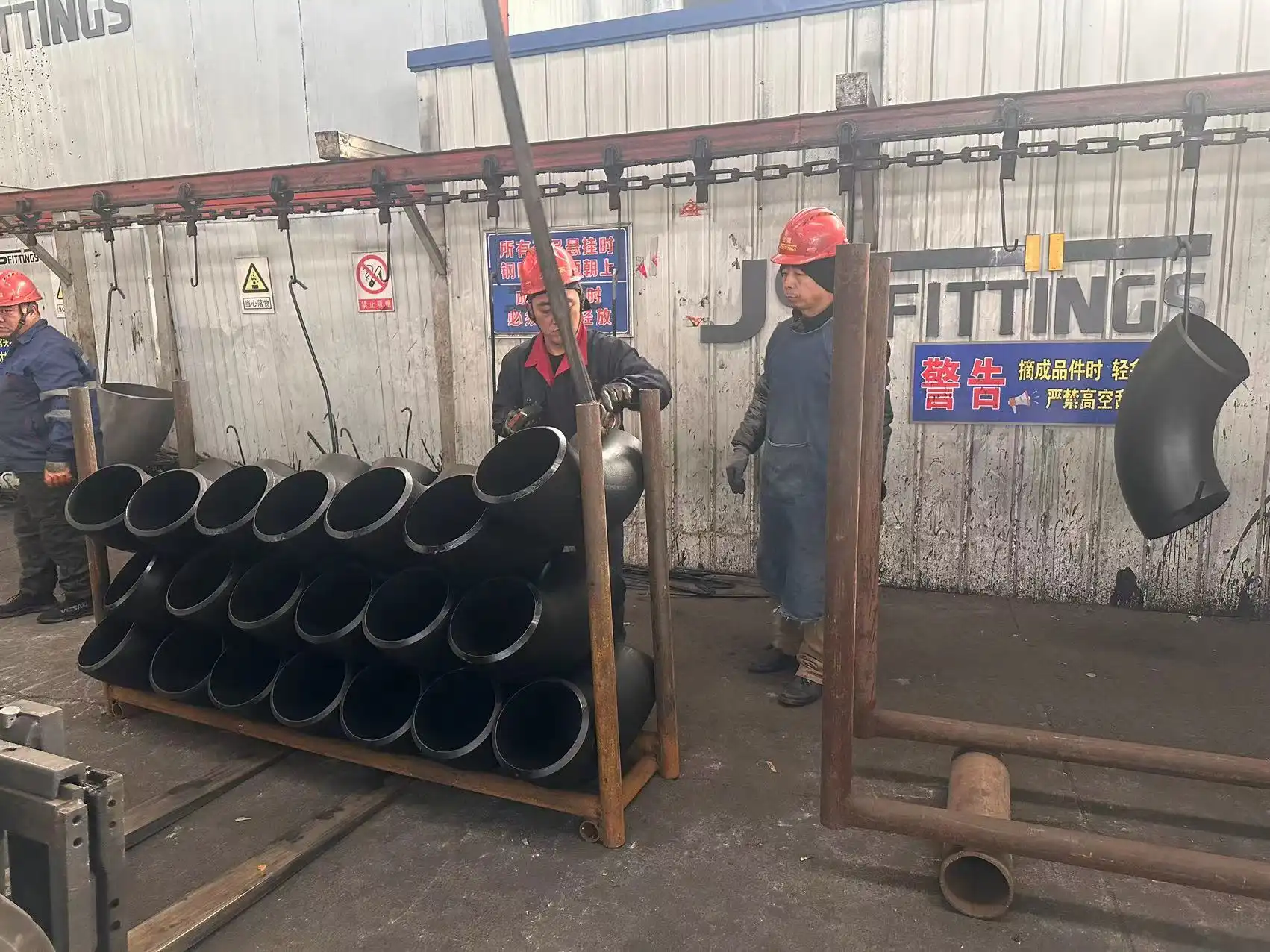45°, 90°, and 180° pipe elbows explained: uses and flow characteristics
Changes in the direction of flow in a group of pipes may be possible if the bends are very twisted. To help you understand what these three elbow poses are for, let's look at them:
45° Elbows
45° elbows change the flow direction only slightly, which makes them perfect for pipes that need to turn slowly. Some important traits are
- Less drop in pressure than 90° elbows
- Less turbulent flow changes that are smoother
- Often used in series to create larger angle turns
- Suitable for applications where space allows for more gradual bends
90° Elbows
90° elbows, also known as quarter bends, are the most commonly used type in industrial piping. They offer:
- A right-angle turn, perfect for navigating around obstacles
- Compact design, ideal for tight spaces
- Higher drop in pressure compared to 45° elbows
- Flexibility in a wide range of situations, from distributing water to handling chemicals
180° Elbows
180° elbows, also called return bends, create a U-turn in the piping system. These specialized elbows are used in specific applications such as
- Heat exchangers and cooling systems
- Compact piping layouts where space is extremely limited
- Creating loops for thermal expansion compensation
To get the most out of a system, you need to know how the flow acts at every setting of the pipe elbows. They have to think about things like pressure drop, flow speed, and the chance of turbulence when they pick the right pipe elbow angle for a job.
Specialty elbows: reducing elbows, mitered elbows, and custom angles
Along with normal elbows, there are a number of customized elbows that meet specific pipe needs:
Reducing Elbows
Several benefits come from reducing elbows, which blend the functions of an elbow and a reducer:
- a form that saves space by getting rid of the need for separate gear parts
- Fewer link points mean less chance of leaks.
- It comes in different angle configurations, most commonly 45° and 90°.
- Perfect for systems that change sizes often and don't have a lot of room
Mitered Elbows
Cutting and fusing pipe pieces at certain angles is how mitered bends are made. Some important features are
- Custom angle options that let you precisely change the flow direction
- Often used in systems with big pipe diameters when normal joints are not available
- Can be strengthened for use in high-pressure situations
- Many times, they are cheaper than swept elbows for big sizes.
Custom Angle Elbows
For uses that need curves that aren't normal, custom elbows can be made to fit unique design needs:
- These come in angles from 1° to 180°.
- Ideal for complicated pipe plans and one-of-a-kind system designs
- Can be made from different materials to fit different settings
- They usually cost more and take longer to make than normal elbows.
This type of pipe elbow gives engineers and designers more options for making pipe systems that work well and take up little space. Standard elbows may not be able to meet the needs of a project, but these unique pipe elbow options are great alternatives.

Conclusion
There are different kinds of pipe bends and different angles that can be used with them. You need to know about these things in order to build and maintain good industrial plumbing systems. Normal 45°, 90°, and 180° elbows are just a few of the different types of elbows. They can also be shortened and mitered. Different types work better with different types of flow and system plans. After giving things like flow needs, room limits, and pressure ratings a lot of thought, engineers and building managers can pick the best elbow type for each job. Their pipes will work well and last a long time this way.
You can get high-quality pipe elbows from HEBEI RAYOUNG PIPELINE TECHNOLOGY CO., LTD., and they can also help you choose the right parts for your commercial plumbing needs. Because we have so many industrial pipe fittings, like butt-weld steel elbows, reducers, and flanges, we can meet all of your design needs and make sure that all of the connections are safe. We are one of the best places to get carbon steel pipes that have been approved by both GOST-R and SGS. Our pipes are fast, safe, and reliable for a long time, and they can be used in many places, from homes to workplaces. Talk to our experts right away to get the pipe elbow you need for your job.
FAQ
1. What is the difference between long-radius and short-radius elbows?
The centerline radius of a long radius (LR) elbow is 1.5 times the normal pipe size. The centerline radius of a short radius (SR) elbow is the same size as the nominal pipe size. When you need a lot of flow, LR elbows are the best choice because they have less pressure drop and better flow. SR elbows are smaller and can be used in places that aren't very big.
2. How do I choose the right elbow angle for my piping system?
You choose the right elbow position by looking at things like the system's design, the amount of space you have, and the flow needs. A 45° elbow is best for slow turns with little pressure drop. A lot of different kinds of turns can be made with an arm at 90°. You can make U-turns with your arm at a right angle. Take some time to think about how everything works before you choose.
3. Are custom-angle elbows more expensive than standard elbows?
Because they are made in a special way and in smaller quantities, custom angle elbows usually cost more than normal elbows. But in complicated pipe systems, they can save money because they don't need as many regular bends or have to be made to order on-site. The exact change in price varies on things like the material, the size, and the number of items bought.
Expert Pipe Elbow Solutions for Your Industrial Piping Needs | RAYOUNG
HEBEI RAYOUNG PIPELINE TECHNOLOGY CO., LTD knows how important it is for your pipe systems to have pipe turns. The wide range of fine choices we offer, including well-known and uncommon parts, will help you discover the ideal elbow for your needs. We can help your lines work better. We stand behind the work we do and know a lot about iron pipe parts. Do not let things that are not good enough stop you from working. Contact our team of experts today at info@hb-steel.com to discuss your pipe elbow requirements and discover how RAYOUNG can elevate your industrial piping solutions.
References
1. Smith, J. (2021). Industrial Piping Systems: Design and Installation. Engineering Press.
2. Johnson, R. (2020). Fluid Dynamics in Pipe Fittings. Journal of Fluid Mechanics, 45(3), 234-251.
3. Brown, A. (2019). Materials Selection for Industrial Piping Components. Materials Today, 22(4), 78-92.
4. Williams, E. (2022). Optimizing Flow in Industrial Piping Networks. Chemical Engineering Progress, 118(6), 45-53.
5. Davis, M. (2018). Handbook of Pipe Fitting Selection and Installation. Industrial Publishing House.
6. Lee, S. (2023). Advanced Manufacturing Techniques for Custom Pipe Fittings. Journal of Manufacturing Technology, 31(2), 156-170.







